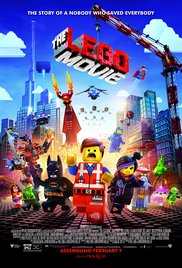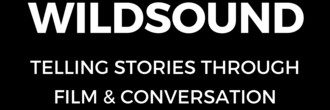 What fun it was to sit down with the extraordinarily talented artist Chris Paluszek. In many ways his career is just getting started as he’ll be helping create all of the upcoming LEGO Movies in the next few years.
What fun it was to sit down with the extraordinarily talented artist Chris Paluszek. In many ways his career is just getting started as he’ll be helping create all of the upcoming LEGO Movies in the next few years.
Enjoy!
Matthew Toffolo: What job has been your most valuable experience so far?
Chris Paluszek: I think the first film I ever worked on, “The LEGO Movie.” The crew was relatively small and I had a lot of opportunity to work with really smart, talented people who were very patient and answered a lot of questions I had about storyboarding, storytelling, and the film industry.
MT: How is the LEGO MOVIE experience? It seems to be a franchise in the making and you’re on board for the creative experience.
CP: The first LEGO film was a bit of an outlier. The franchise hadn’t been established, so there weren’t many boundaries on what we could or couldn’t do. So, we had a ton of fun trying lots of crazy ideas that you just don’t usually have the freedom to try on other films. Definitely a highlight of my career.
MT: Is there a type of film that you haven’t worked on yet that you would love to work on?
CP: I would love to work on a short film, like the Pixar shorts that precede an animated feature. Small, self-contained narratives like that are great opportunities for artists to push themselves and experiment.
MT: What is the typical job storyboarding animation movies?
CP: It can depend, but usually there’s a working script that is constantly evolving in conversations between the writer and the director, and a story artist “boards out” a scene from the latest draft. The story artist draws whatever the scene calls for, whether it’s a high speed car chase, or two characters talking in a coffee shop. Whatever case, it’s up to the storyboard artist to depict the action and decide on what shot language best tells the story.
MT: What’s the general working relationship and process between a storyboard artist and the director?
CP: The director has a vision for their movie, and as a story artist you’re there to support that vision. When you’re given an assignment you meet with the director, who lays out how they imagine the scene. You ask lots of questions and at the end of the meeting you should hopefully have a clear idea of what the director wants to see. Within that framework, you can bring some of yourself into the scene, whether it’s acting choices, or maybe a really cool composition that frames the action, or even a small comedic beat (if it suits the tone of the scene).
MT: What film, besides the ones you’ve working on, have you watched the most times in your life?
CP: I’m always awed by Hayao Miyazaki’s “Kiki’s Delivery Service.” It’s fantastical, yet down to earth. It’s lighthearted and also deeply emotional. Everytime I watch it I see something new.
MT: Do you have a storyboard mentor?
CP: My first story position was an internship on a TV show, and the Story Lead for that crew really helped me out. He was patient and helped me with the basics, like maintaining shot continuity as you “cut” (draw a new shot) around the action.
MT: Where do you see the future of storyboards in the motion pictures?
CP: Most story jobs are within a tight crew of artists that work intimately with the director, so they can nimbly address major story changes in time for deadlines. However, some studios have made whole films by sending work out to freelancers, working from home. While I can’t say I love my commute, working alongside incredible talent has been the chief way I’ve improved as an artist and storyteller.
MT: Where did you grow up? How did you get into working in the film industry?
CP: I grew up in Virginia, and always loved art as a way of telling stories. I went to school for animation, and moved out to Los Angeles thinking I could be an animator. Unfortunately my animation skills weren’t very good! But I was lucky to bump into someone at the right time, who took a chance and offered me a production internship at a small TV animation studio. While there I crossed paths with the Storyboard department, who were looking for extra help. I was able to become a full-time Story intern, which eventually led to an official job as a Story Artist! It was a strange path, threaded with a lot of luck and kindness.

____
Interviewer Matthew Toffolo is currently the CEO of the WILDsound FEEDBACK Film & Writing Festival. The festival that showcases 10-50 screenplay and story readings performed by professional actors every month. And the FEEDBACK Monthly Festival held in downtown Toronto on the last Thursday of every single month. Go to www.wildsound.ca
 SUBMIT your TV PILOT or TV SPEC Script SUBMIT your TV PILOT or TV SPEC ScriptVoted #1 TV Contest in North America. |
 SUBMIT your SHORT Film SUBMIT your SHORT FilmGet it showcased at the FEEDBACK Festival |
 1st CHAPTER or FULL NOVEL CONTEST 1st CHAPTER or FULL NOVEL CONTESTGet full feedback! Winners get their novel made into a video! |
 SUBMIT your FEATURE Script SUBMIT your FEATURE ScriptFULL FEEDBACK on all entries. Get your script performed |


Reblogged this on WILDsound Writing and Film Festival Review.
LikeLike
Reblogged this on Documentary Short Film Festival.
LikeLike
Reblogged this on WILDsound Writing and Film Festival Review.
LikeLike
Reblogged this on WILDsound Writing and Film Festival Review.
LikeLike
Reblogged this on FEEDBACK Animation Film & Screenplay Festival.
LikeLike
Reblogged this on Fantasy/Sci-Fi FILM & WRITING FESTIVAL.
LikeLike
Reblogged this on WILDsound Writing and Film Festival Review.
LikeLike